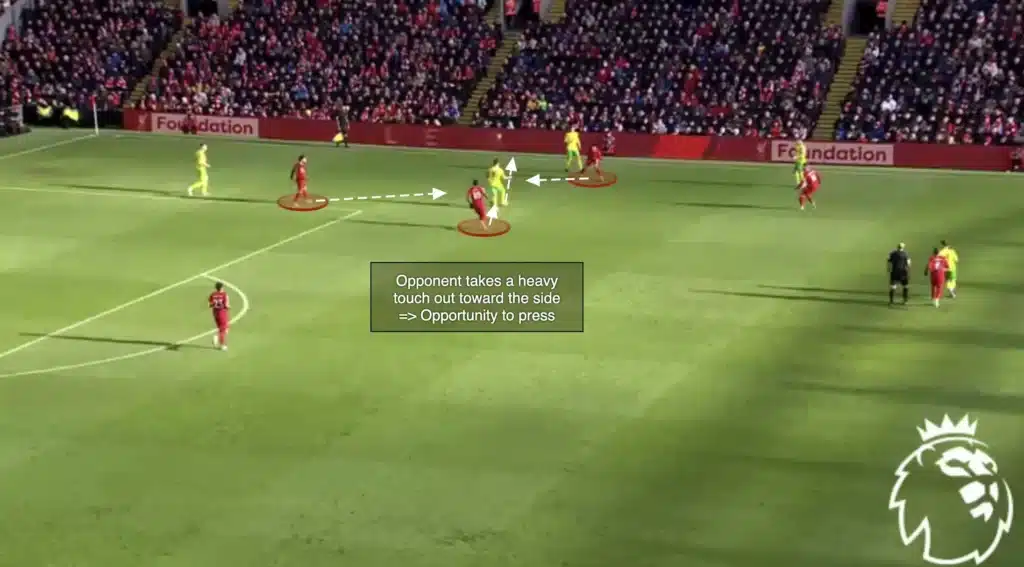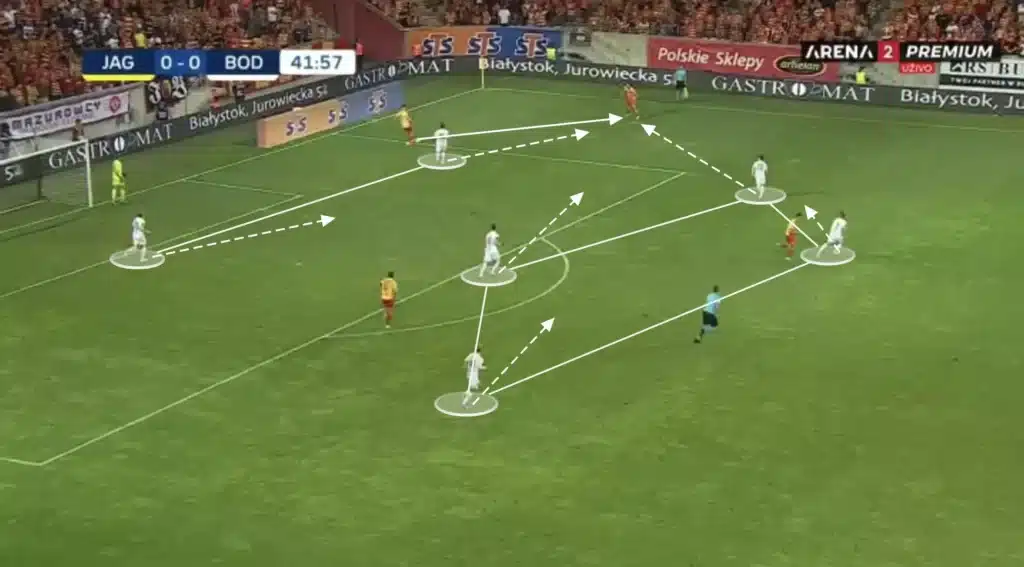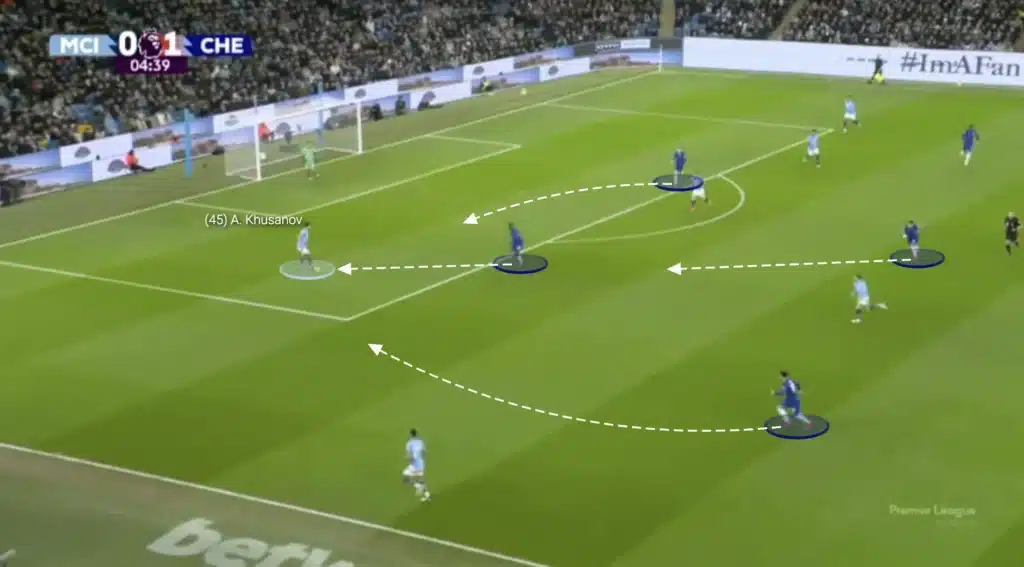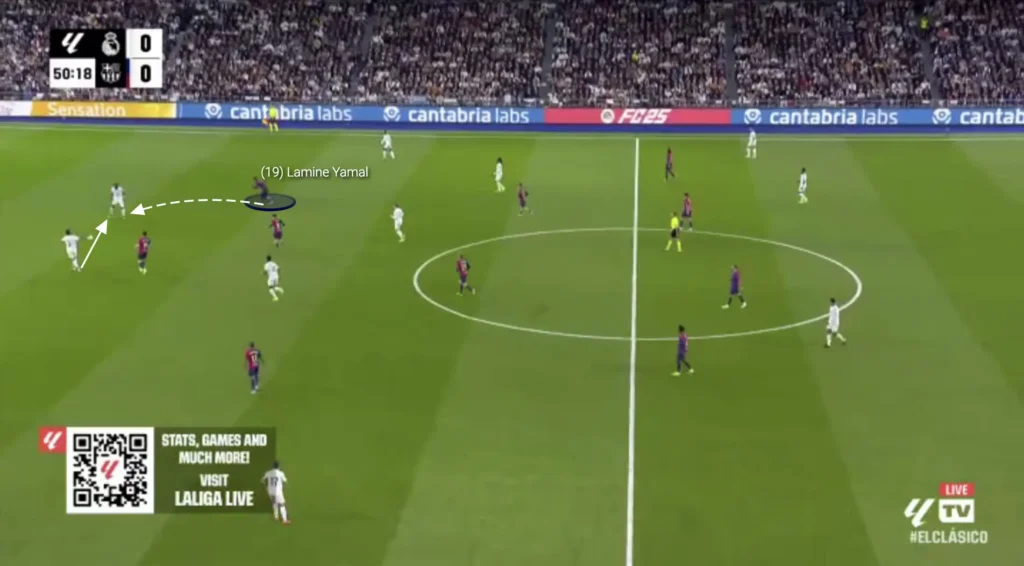Pressing has become one of the most defining tactical elements of modern football. The best teams in the world—whether it’s Manchester City, Liverpool, Bayern Munich, or Barcelona—have mastered the art of pressing to regain possession and control games. However, pressing is not a random act of chasing the ball. It is a highly organized and strategic action based on pressing triggers—specific moments in a match that signal a team to apply collective pressure.
In this article, we will explore the importance of pressing triggers, different types of triggers, how teams use them, and real-world examples of pressing triggers in action. By the end, you’ll understand how pressing is structured and how elite teams use it to dominate opponents.
What Are Pressing Triggers?
A pressing trigger is a specific cue that tells a team to engage in pressing. These cues can be technical errors, positional situations, passing decisions, or even deliberate tactical setups. Pressing triggers ensure that pressing is structured, preventing players from wasting energy by chasing the ball aimlessly.
Instead of pressing continuously, teams wait for the right moment to apply coordinated pressure, ensuring that they have the highest chance of winning the ball. Pressing triggers can be set by the coach, analyzed through opposition scouting, or recognized instinctively by well-trained players.
By reacting to these triggers, teams can disrupt the opponent’s build-up play, force turnovers in dangerous areas, and create immediate attacking opportunities.
Types of Pressing Triggers
There are several pressing triggers that teams use, depending on their tactical approach. Below, we break down the most common ones:
1. A Poor First Touch
- When an opponent takes a heavy touch or miscontrols the ball, it creates a small window of opportunity to press and win back possession.
- Teams that press aggressively will react immediately when they spot an opponent struggling to control the ball.
- Example: Liverpool’s gegenpressing system under Jürgen Klopp relied heavily on this. The moment an opponent miscontroled the ball, multiple players would converge to press.

2. A Backward Pass
- A backward pass often signals a loss of attacking momentum for the opponent. The receiving player will usually be more isolated, meaning they have limited passing options.
- Pressing teams will push forward aggressively when they see the ball being played backward, aiming to trap the opposition in their half.
- Example: Chelsea frequently use this pressing trigger. Once the opponent passes backward, the Chelsea forwards step up to block passing lanes while midfielders close in to win the ball.

3. A Pass to the Fullback
- Fullbacks typically have fewer passing options than central players, making them ideal targets for pressing traps.
- A common strategy is to force the ball to the fullback and then apply immediate pressure to prevent them from passing forward.

4. A Goalkeeper in Possession
- Many teams struggle when their goalkeeper is forced to play out under pressure. Pressing teams use this as an opportunity to force long, inaccurate clearances.
- Example: Pressing when the opponent’s goalkeeper receives a back pass. The attackers can step up to cut off short passing options, forcing the goalkeeper into a difficult decision.

5. A Pass to a Specific Player (Targeting a Weak Link)
- Some teams identify individual opponents who are weaker under pressure. When these players receive the ball, the pressing team immediately intensifies their press.
- Example: Teams often target opposition players who lack composure, forcing them into rushed decisions. This can, for example, be younger and more inexperienced players. Enzo Maresca’s Chelsea did this in a game against Pep Guardiola’s Manchester City, where they would target the new player Abdukodir Khusanov in the high press. This strategy worked well, as Khusanov struggled in possession.

6. A Body Position That Limits Options
- If a player receives the ball in a closed body shape (i.e., facing away from the opponent’s goal), they are vulnerable to pressing.
- Well-coached pressing teams recognize when an opponent is in a position where they cannot turn or see their passing options and press aggressively at that moment.
- In this situation, for example, FC Barcelona are playing against Real Madrid, and a pass is played between the Madrid center-backs. The center-back receiving the ball has a closed body position. The right-winger, Lamine Yamal, recognizes this and pushes up to put pressure on the center-back from his blindside before he receives the ball.

7. A Slow or Looped Pass
- Pressing teams also react to slow or lofted passes. These passes take longer to reach the receiver, giving the pressing team time to close down space before the opponent can control the ball.

Why Pressing Triggers Are Important
Understanding pressing triggers is crucial for a team’s defensive and attacking setup. Well-executed pressing offers several advantages:
1. Forcing Mistakes from the Opponent
Pressing at the right moment increases the likelihood of winning the ball. When an opponent is under pressure in an uncomfortable situation (e.g., receiving a pass while facing their own goal), they are more likely to misplace a pass or lose possession.
2. Controlling Where the Opponent Plays
A well-structured press using triggers ensures that the opposition is forced into specific zones, limiting their passing options and influencing their decision-making. For example, teams often force opponents wide because fullbacks have fewer passing lanes than central players.
3. Creating High-Quality Possession Regains
Winning the ball high up the pitch through pressing allows teams to attack with fewer defensive obstacles. Many top teams rely on pressing to create goal-scoring opportunities immediately after regaining possession.
4. Conserving Energy in a Pressing System
If a team presses without structure, they will quickly exhaust themselves. Pressing triggers ensure that pressing is done in coordinated bursts rather than continuously, preventing unnecessary running.
5. Disrupting the Opponent’s Build-Up Play
Teams that rely on structured build-up play (such as Manchester City or Arsenal) struggle against teams that know when and where to press them. By setting pressing traps, teams can break the opponent’s rhythm and regain control of the match.
How to Implement Pressing Triggers in a Team
For coaches looking to incorporate pressing triggers into their team’s tactics, here are key steps:
- Analyze the Opposition: Identify which players or situations are vulnerable under pressure.
- Train the Players to Recognize Triggers: Ensure that players understand when to engage in pressing.
- Coordinate the Press: Pressing must be a team effort. If one player presses and others do not, gaps will appear.
- Use Pressing Drills in Training: Simulate real-game situations where pressing triggers can be applied.
Conclusion
Pressing triggers are an essential part of modern football tactics. They allow teams to press intelligently, ensuring that defensive pressure is applied at the right moments. By recognizing key moments—such as poor touches, backward passes, or vulnerable body positions—teams can disrupt opponents, regain possession, and create goal-scoring opportunities.
Understanding pressing triggers can take a team’s pressing game to the next level and provide a tactical edge over the opposition.
